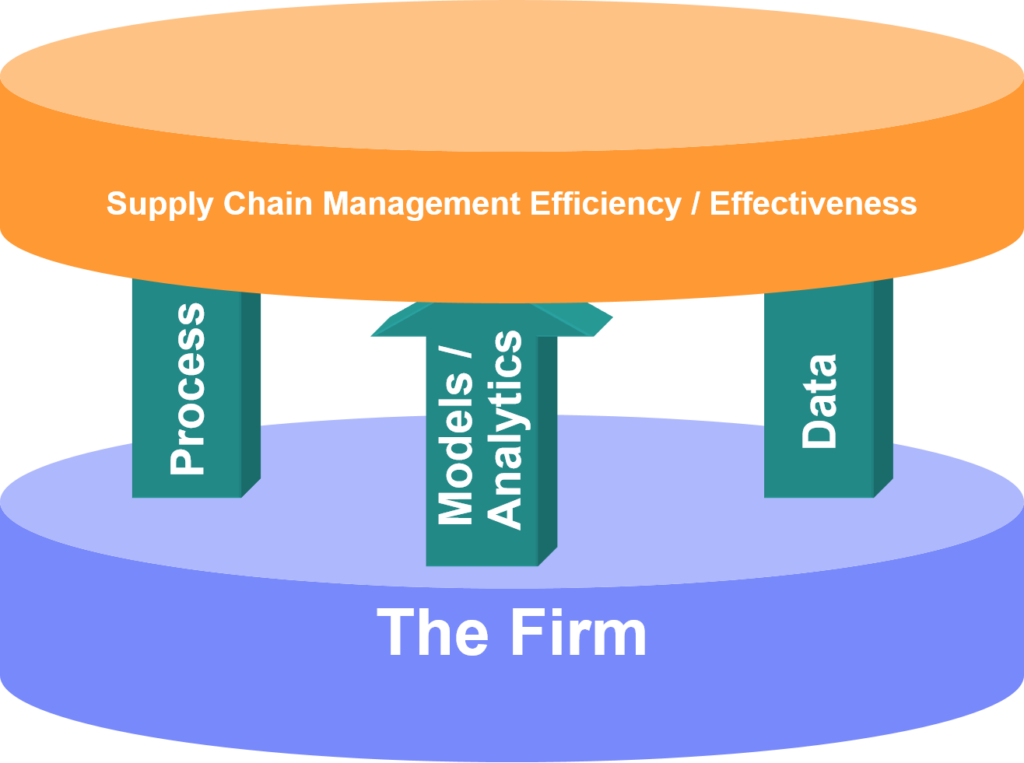The director of Supply Chain (or inventory, manufacturing, analytics, customer order fulfillment, etc.) has pulled together a cross-discipline team to identify potential enhancements in managing the demand-supply network (DSN) that will result in improved business performance. Typically, these enhancements focus on better coordination and more intelligent decision with respect to matching assets with demand across the DSN to handle scope (complexity) and scale (size). Specific projects are sketched out where the individual tasks belong one of the three pillars of supply chain management: business process and organizational structure, data collection, and availability, and models (analytics).

Tasks require work which requires the expenditure of funds and consumption of resources outside of the day to day execution and the small incremental improvements snuck into the brief gaps in the action and weekend work. “Expenditures”, whether an inside group or outside group, drive the ROI challenge à especially for those “math modeling guys” – lately relabeled (disguised) as “analytics!”
What value will the business obtain from “better models”? Typical suspects are reduced inventory, increased output, lower cycle time, better on-time delivery, among others. Let’s back up one step and ask “is there an existing body of evidence or experience readily available for firms who have taken the plunge into industrial strength models/analytics?”
The answer is YES and details can be found in the INFORMS Interface Journal, especially the Edelman issue each January. I am certain the initial reaction of most readers is – Fordyce who are you kidding – something of value and readable in an academic journal! Again the answer is YES – the journal was specifically started for this purpose in 1970 by Dr. Peter Norden (IBM and Columbia). Each paper is written in a readable style, covers the core business challenge, the proven business contribution, and an easy to understand technical description of the solution (well as easy as possible). Proven – requires publically available testimony from the management team vetted by professionals with experience in the trenches. Journal editors, such as Prof. John Milne, have a proven track record in successful applied modeling.
Two of my favorites are Kroeger (2014) and John Milne’s IBM application for central planning (2001). Kroeger used a combination of simulation and optimization to improve Pharmacy Inventory management. The technical details are fascinating, but the story of the transformation within Kroeger about the value of “industrial strength modeling” which includes the “ROI challenge” is a great read. Milne’s IBM application demonstrates even the largest and advanced firms had to go through the ROI challenge to move from spreadsheets to industrial-strength models.
You may be wondering “Ok Fordyce, but it would be helpful if you provided a short list of your favorite takeaways.” The ROI challenge occurs across three phases of the project: (1) initial investigation, (2) the go decision – selecting and funding projects, and (3) development and implementation. Our focus is the go decision (GD).
- Typical suspects (reduced inventory, increased output, lower cycle time, better on-time delivery, etc.) are mandatory to estimate, but never capture the full actual value from successful models.
- Scorecards are helpful but limited – typically a checklist of functions that fail to capture the global sense of the business needs and have great difficulty in measuring the readiness of the team to take on the challenge.
- It is important to have key stakeholders involved and provide their views, but it is impossible to eliminated uncertainty and obtain 100% consensus. Someone has to be the general in charge
- Select and fund projects with incremental steps
- Make certain your projects are focused on optimizing (a word I dislike) the entire process, not a specific decision. “Successful” applications understand and meet the need to “optimize” the process and decision sequence while “evolving” the firm to the use of more sophisticated methods within the optimized process – extending the borders of bounded rationality.
- The value of the “math stuff” grows over time. When Copernicus first proposed a sun-centric system in contrast to Ptolemy’s earth-centric model, his predictions were no better (and at times worse) than Ptolemy’s orbits of orbits (Ongoing Challenge– Improving Organizational Performance with better Decisions.)
- Projects are never pillar (process, data, and models) specific, but work across them improving “community intelligence”. Models enable the process transformation.
Stu Reed, IBM Vice President, Supply-Chain Development and Deployment, made this observation (Milne 2001) –“what we have here is a process transformation that was hardened by the application of information technology that was set upon the fundamentals of key operations research theory”
- The models enable faster and more intelligent responsiveness to emerging situations generating value difficult to anticipate.
Nick Donofrio, IBM SR VP, Technology & Manufacturing stated the following (Milne 2001) -“the ability to simultaneously respond to customers’ needs and emerging business opportunities in an intelligent, orderly manner is a survival requirement for today’s marketplace. Our customers continue to tell us that the quality of our responsiveness is as important to them as the quality of our products.”
- Make certain the team you put together are up to the task of being agents of change.
In the future, we examine the third phase – development and implementation – when the models are wrong and intuition is unreliable.






